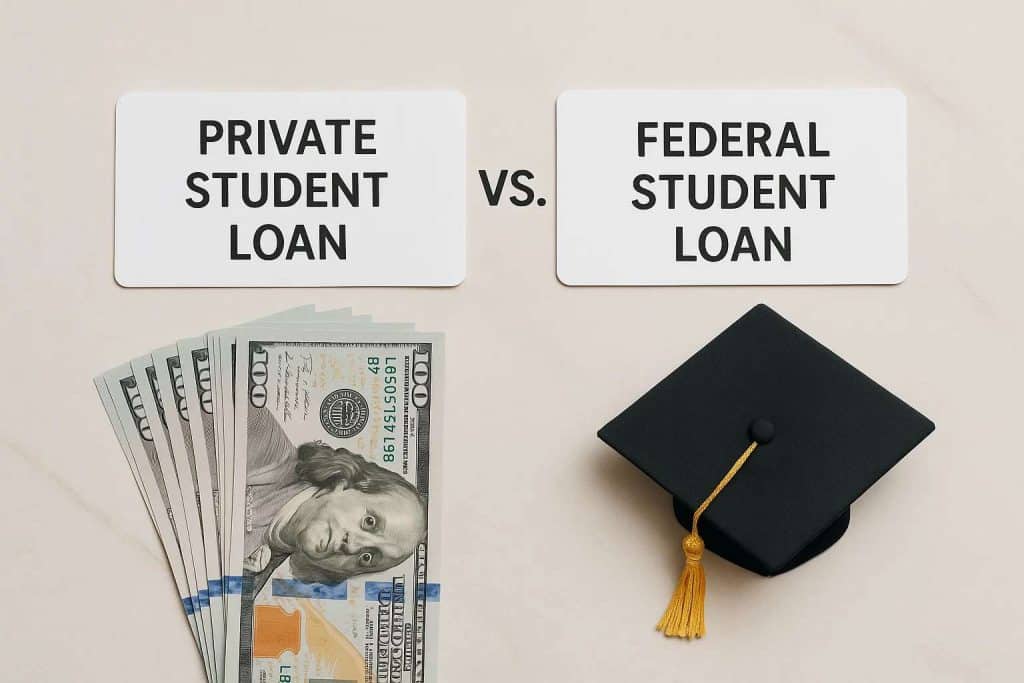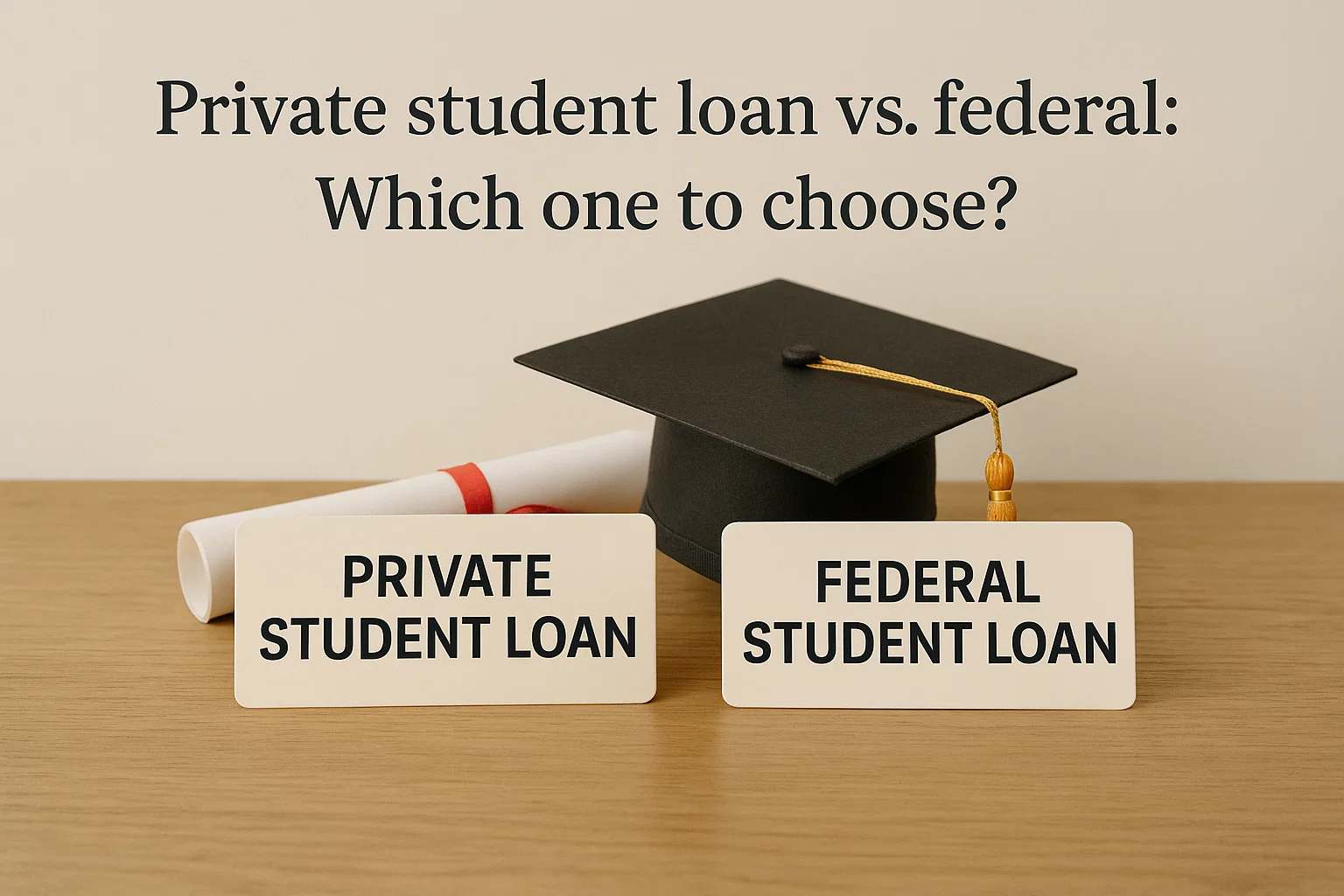Choosing how to finance higher education in the United States is one of the most important decisions a student and their family can make. College costs continue to rise, and many individuals rely on student loans to bridge the financial gap.
While both loan types serve the same purpose—helping students pay for tuition, housing, books, and other education-related expenses—their terms, benefits, and risks differ significantly. Understanding these differences is crucial for making a well-informed decision.
Federal loans: the government-backed option

Federal student loans are widely considered the first choice for most students. These loans are issued directly by the U.S. Department of Education, offering protections and benefits that private lenders cannot match. They typically come with fixed interest rates, meaning that monthly payments remain stable throughout the life of the loan.
Another key advantage is accessibility. Federal loans do not require a credit check for most undergraduate students, allowing those without established credit histories to qualify. Additionally, interest on certain types of loans, such as subsidized loans, is covered by the government while the student is enrolled at least half-time.
Limitations of federal loans
Despite their benefits, federal loans have borrowing limits that may not cover the full cost of college, especially at private institutions with high tuition. Undergraduate students can only borrow a set amount each year, with a maximum that may fall short of total expenses. Parents sometimes turn to Parent PLUS Loans to bridge the gap, but these come with higher interest rates and require a credit check.
Another drawback is that repayment programs, while flexible, can extend the length of time borrowers remain in debt. Choosing an income-driven repayment plan may lower monthly payments but often increases the total amount paid over the lifetime of the loan. For students seeking a quicker payoff, these plans may feel more like a burden than a relief.
Private loans: the alternative through banks and lenders
Private student loans, issued by financial institutions such as Sallie Mae, serve as an alternative or supplement when federal loans are not enough. These loans vary widely depending on the lender, but they can sometimes offer competitive interest rates, especially for borrowers with excellent credit or those with a co-signer who has strong financial standing.
Unlike federal loans, private loans can cover up to the full cost of attendance, including tuition, fees, housing, and other related expenses. This makes them appealing for families who face a large funding gap. Many private lenders also allow for flexible repayment terms, such as choosing between fixed and variable interest rates, or selecting repayment options while still in school.
Drawbacks of private loans
The major risk with private loans lies in their lack of borrower protections. Repayment terms are often stricter, and options for deferment, forbearance, or forgiveness are limited or nonexistent. Interest rates may also vary, and those with variable rates face the uncertainty of payments increasing over time.
Additionally, qualification usually depends heavily on credit history and income. For young students without a financial track record, approval often requires a co-signer, typically a parent or guardian, who becomes equally responsible for the debt. This shared responsibility can place strain on family relationships if repayment becomes difficult.
Which should you choose?
The general recommendation for most students is to maximize federal student loans before turning to private options. Federal loans provide stability, flexibility, and protections that are particularly valuable during times of financial uncertainty. Only after reaching the borrowing limits of federal loans should private loans be considered, ideally as a last resort or as a supplemental tool to fill funding gaps.
However, every financial situation is unique. Students attending higher-cost institutions may need to combine both types of loans to fully fund their education. In such cases, careful comparison of interest rates, repayment terms, and long-term financial impact is essential.

